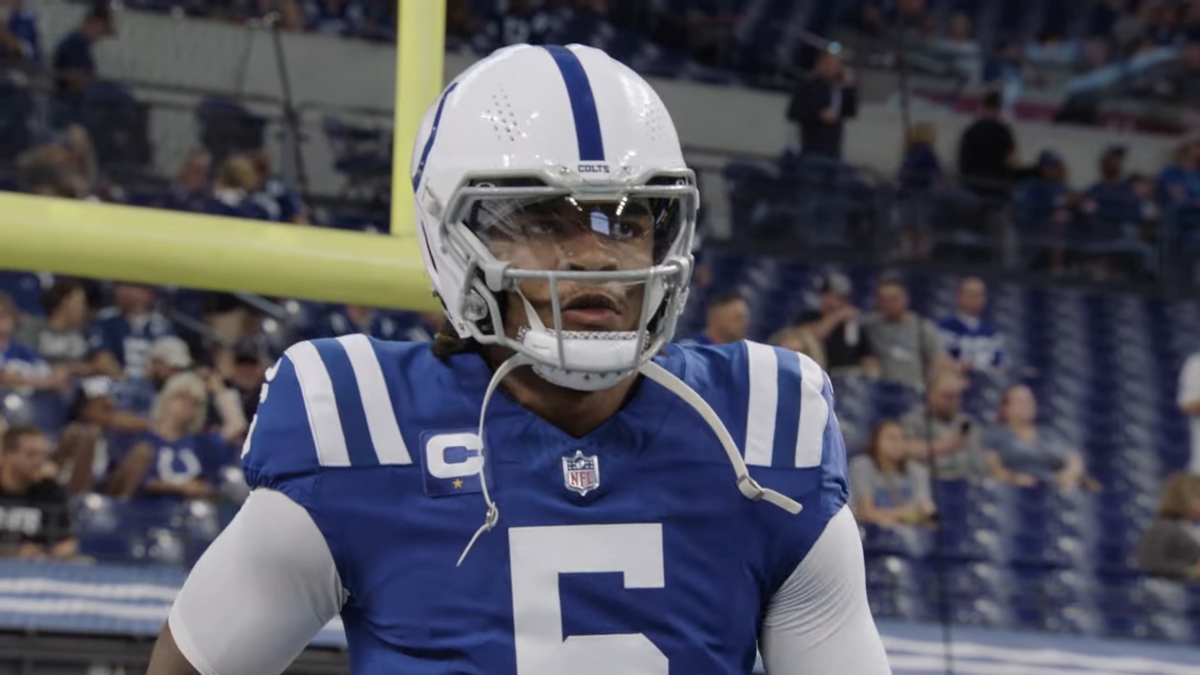In an era defined by instantaneous gratification and all-or-nothing attitudes, society’s ability to be patient seemingly ceases to exist. This worldwide cultural shift not only shapes our day-to-day lives, but has permeated itself into the realm of professional sports.
Teams now operate with short-term objectives geared towards winning as soon as possible. While this is logical at face-value, it often goes overlooked how this mindset mitigates the importance of organizational culture and individual development, which typically produce lasting positive effects for the long-term.
The most recent instance of this phenomenon comes from the NFL, where on Oct. 30, the Indianapolis Colts made the decision to bench second-year quarterback Anthony Richardson for the foreseeable future.
Richardson, a 22-year old who was drafted fourth overall in the 2023 NFL Draft, was coming off a poor overall performance in the Colts’ Week 8 loss to the Houston Texans. While completing only 31.3% of his passing attempts for a measly total of 175 yards is discouraging enough, Richardson made headlines by seemingly substituting himself out of the game because of reported fatigue. The expectation for NFL quarterbacks is to play every single offensive down, as they are viewed as the leader of the offense, so this was a rather puzzling sight in the middle of a game.
While the Week 8 situation seems to warrant a need to replace Richardson, the context of the Colts’ management of the young quarterback highlights some major faults on behalf of ownership and the coaching staff in their decision-making process.
Ahead of the 2023 NFL Draft, Richardson was viewed as an exciting prospect with impressive physical traits and abilities, but very limited playing time as a quarterback at the University of Florida.
NFL.com’s Lance Zurlein gave a comprehensive scouting report on Richardson going into the draft. “Dual-threat quarterback with an elite physical profile and a lot of work that needs to be done to reach a potentially high ceiling,” wrote Zurlein. This was the consensus among NFL Draft analysts, as Richardson was worth a first-round selection but was most likely going to need time to develop.
After suffering an injury that limited Richardson to four games in 2023, his rookie season was less focused on skill refinement and instead centered on physical rehabilitation of his shoulder. In 2024, Richardson has appeared in only 10 total games across his NFL career, barely over half of a single season.
The Colts drafted the quarterback out of Florida knowing full well he was a project whose upside would hopefully pay future dividends if they supported him along the way. A little over a year later, the organization’s priorities have apparently changed, and Richardson’s value has tanked in their eyes.
It’s no secret that playing professional sports is incredibly challenging. Every single week, the competition is fueled with some of the most talented athletes from around the world. Nowadays, no player can afford to have an “off-game” or make any kind of mistake.
The expectations placed on players to perform as soon as they put on their uniforms are sky-high, and failure to meet those unrealistic standards can cost them their job in the blink of an eye. Even when prospects are heralded as long-term projects, teams no longer have the willingness to wait on their development.
One of the primary reasons for this is the cost of players in professional sports. Specifically looking at the NFL, the highest-paid quarterback, Dak Prescott of the Dallas Cowboys, signed a record-breaking, four-year $240 million contract prior to the 2024 season. As the NFL’s salary cap steadily increases year-after-year, each following contract extension is poised to break the previous record. This elevates the rest of the market for NFL quarterbacks, as now the 16th highest-paid quarterback in 2024, Daniel Jones of the New York Giants, is set to earn $40 million this season.
If players are going to cost more as the market increases exponentially across all major professional sports leagues, there becomes a demand for their on-field performance to match that price tag. This makes teams hesitant to commit to a player if they aren’t utterly dominant, giving them a very short leash to either perform or get out.
While the focus on economical soundness seems rational on behalf of professional organizations, it has caused them to become incredibly near-sighted. After all, only one team can win a championship at the end of the year. The shortcomings of previous seasons are often used as building-blocks towards an eventual championship run, and yet the second a roadblock presents itself to an individual player or team as a whole, attitudes shift towards a complete reset or retool of the roster.
While it may be true that the grass can always be greener, far too many teams forget that they need to care for the lawns. Results don’t come instantly, especially in sports. If teams truly want to build sustainable success, they need to reevaluate their priorities and commit to long-term plans where they value all members of their organization.
This article appeared in print on Page 10 of Vol. LVIII Issue VII, published Nov. 18, 2024.

